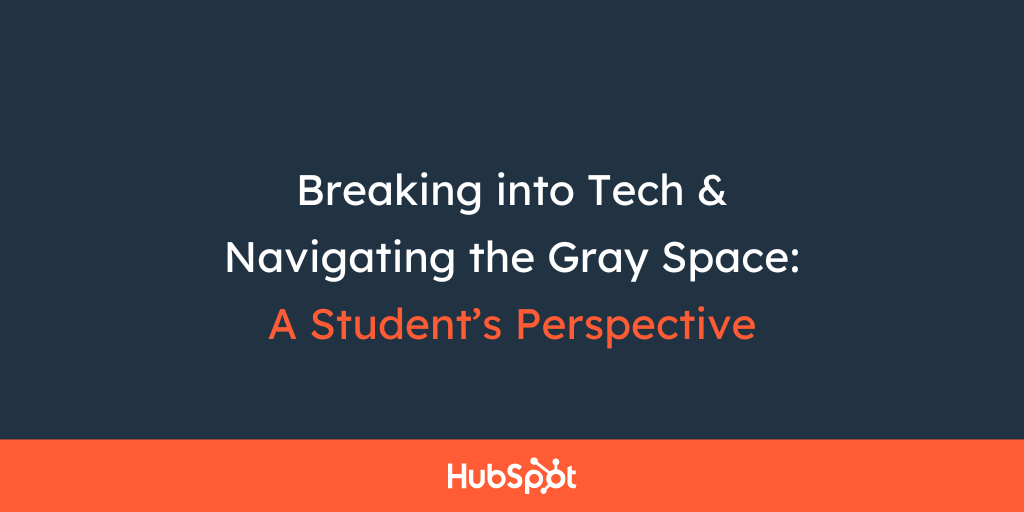 Talk to any job seeker today and you’ll hear an almost unanimous response about the state of his or her search: writing cover letters sucks.
Talk to any job seeker today and you’ll hear an almost unanimous response about the state of his or her search: writing cover letters sucks.
As someone who recently spent months looking for a job, I couldn’t agree more. For me, funemployment (albeit, not so fun), looked a lot like this: wake up, scour Indeed.com for open positions, find one that seems interesting enough to apply to, and then spend the remaining hours of the day slaving away over the perfect cover letter. Honing the wording, finding the right person to address it to, bearing my soul - but not too much.
Cover letters require you to become a master of the humblebrag. You have to talk about yourself in a way that is not too proud, not too modest, but, Goldilocks’ style, just the right amount of shameless self-promotion.
Then, when I’d finally send off a perfectly crafted, four paragraphs of spell-checked awesome, I’d invariably wake up the next morning to an “insert name here” email telling me that the company had reviewed my materials and that I didn’t meet the qualifications for the position.
Dude, it’s been less than 24 hours. Did you even read my cover letter?
The answer, I’m afraid, is usually a hard “NO.”
Jobvite’s annual Talent Acquisition Report revealed that 60% of recruiters found cover letters to be the least important factor in deciding if candidates were a good fit for their company. And, anecdotally, the same percentage reported not reading them at all.
With over 250 applicants, on average, applying for a single job posting, cover letters no longer align with the pace and scale of the current hiring market. What we need is Mean Girls-inspired reality check: Let's stop trying to make cover letters happen. They're not going to happen!
That’s why we decided, once and for all, to take them out of the equation. As of this week, HubSpot applications no longer require cover letters. Hello there, 21st century.
So, if the cover letter is going extinct, how can you stand out in the hiring process? Candidates should showcase themselves in modern and creative ways. Here at HubSpot and out in the wild, we’ve seen some remarkable examples of cover letter alternatives that blew recruiters away. Let’s explore some examples to help get your creative juices flowing. Hopefully, you’re left inspired for tackling your next job application with content that goes beyond the age-old cover letter.

1) Don’t Say It, Sing It
Al Biedrzycki was applying for jobs during the midst of the Great Recession. When he graduated in May 2009, he quickly realized it wasn’t going to be easy to land an entry level dream job in marketing without any real-world experience.
At least, not with the traditional resume-cover letter one-two punch approach, that is.
So Al decided he would use what he learned in business school and market himself. He knew he could either go big or go home. And, go big he did.
A talented musician, Al took what he would typically include in his written cover letter and brought it to life in a music video called “Hire Me.” In his clever lyrics, complete with a full chorus, Al sang about his qualifications, including his marketing degree, extensive internship experience, and even his Japanese language skills. Sounds crazy, right? But the crazier thing is that it worked.
In fact, it more than worked. Al’s video went viral and landed him a spot on the CNN nightly news. This caught the eye of a number of Boston marketing organizations, including HubSpot’s.
When a position opened up in 2011, HubSpot immediately reached out to Al to see if he was interested in coming on board. Luckily for us, he was and four years later, Al’s a key member of our integration partner marketing team.
What worked about Al’s video was that he knew his audience. He wanted a role in marketing, so he found a creative way to market himself. In his own words, videos can be a great way to get noticed if you can “show you understand the medium and the channels for getting it out, and you nail the messaging.”
2) Show Your Social Side
Companies not only receive applications through career sites alone. If you factor in applications from referrals and external job boards like LinkedIn, Glassdoor, and Indeed, the number can double or triple. Tech companies, including Google, receive upwards of 2 million applications in a single year.
So, how you can avoid submitting your application with a farewell greeting of “May the odds be ever in your favor?”
In the same way that Katniss and Peeta repeatedly thought of creative ways to use common items and tools at their disposal to outsmart their competition, so too can you use your favorite familiar social media tools to stand out amongst your fellow applicants.
Are you an avid pinner? Jeanne Hwang was. After graduating from Harvard Business School, Jeanne applied to work at Pinterest and opted to pin her credentials rather than submitting a traditional cover letter and resume.

If you are sending snaps to your friends all day, maybe Elski Felson’s SnapChat video cover letter is more your style. Elski took the exact phrases of the SnapChat job description and demonstrated in a SnapChat story how he fit the bill on every line item, infusing it with his cheeky sense of humor. Bold moves like Elski’s may yield bold rewards, as long as you know each company’s personality and tolerance for pushing the envelope.
And, let’s not forget the Twitterverse. Twitter resumes (#twesume) and cover letters are definitely here to stay. By parsing yourself down to 140 characters, you have to think outside the box about how to best package yourself into snackable content that recruiters will eat up. And I’m not just talking about linking to your longform resume.
Jonathan Pelleg, for example, was hired for a $70k job by renowned advertising firm Saatchi & Saatchi after he tweeted this response to a posting by one of the firm’s executives.
First, determine which social media outlet you best flourish on. From there, you can demonstrate your knowledge of the tool (employers will want to tap this later) while simultaneously revealing substantive information about what makes you specially qualified for the position.
3) Practice What They Preach
Let’s be real: hiring managers don’t really care that much about what you’ve done; they want to see what you can do. Companies want to know that candidates understand their unique business model and their product, and will be positioned to add real value to their organization.
Sam Mallikarjunan showed that he could deliver the goods when it came to inbound marketing by creating a website called HireMeHubSpot.com. Using his website, Sam wrote content about why he would be an outstanding addition to the HubSpot team, complete with a landing page and webinar about why HubSpot should hire him.

Sam used social media to promote his content, and even took it a step further by launching paid ad campaigns on LinkedIn, Facebook, and Google AdWords targeting everyone working at HubSpot, anyone living near HubSpot that worked at or was a fan of the company page, and anyone living near Cambridge, MA searching the term “HubSpot,” respectively.
Sam knew that this type of content creation was exactly what the HubSpot software platform was doing for businesses around the globe, and recruiters immediately recognized that if he could do it for himself, Sam would be able execute similar projects for HubSpot customers. Demonstrating how you’re creative idea will translate into tangible results for the company is crucial when deciding how to best strut your stuff for potential employers.
Sam’s approach was also super impressive because he was so ahead of the inbound curve. When he he built his web page, inbound marketing was a still relatively new and unknown, so Sam’s detailed knowledge of the field was pretty remarkable. Staying ahead of trends and finding ways to be a thought leader in a developing field can also help catapult you to the top of the hiring list.
4) Remember the Medium is Sometimes the Message
Cambria Davies was looking for a way to land the internship she’d dreamed of since her freshman year. She knew theatrics wasn’t the way to go; no singing and dancing to be had here. But, she wanted to convey her genuine passion for HubSpot in an enthusiastic, yet strategic, way.
Enter Cambria’s Culture Code.

Cambria, like the other one hundred applicants applying for the internship position, had done her due diligence and read about the unique culture HubSpot has cultivated, outlined in our longstanding Culture Code. What made her approach special, however, was that she not only took the time to understand and absorb our company values, but she went a step further by outlining how her goals and values directly aligned with ours.
Our recruiters also loved the format Cambria used to present her culture code:
Clean, simple, and easy to understand.
Like Walt Whitman once said, “Simplicity is the glory of expression.” As recruiters pour over hundreds of applications a day, they are more likely to gravitate towards layouts and graphics that make it easy to take in key resume points at first glance.
Infographic resumes or cover letters, like Cambria’s, and personal SlideShares can be a great way to grab a recruiter's eye and ensure that your experiences get the attention they deserve rather than being lost amongst endless lines of 12 pt Times New Roman.
5) Give Your Resume a Makeover
At the end of the day, nothing is going to get you in the door more than a perfectly tailored resume. While recruiters aren’t looking at your cover letter, they ARE looking at your resume. But, only for about 6 seconds.
Maximize the “face time” your resume gets by using a slick template and emphasizing your accomplishments and achievements rather than focusing on duties and responsibilities. Use action verbs that echo key responsibilities advertised in the the job posting. Just as the days of cover letters are quickly coming to a close, so too are the days of having only version of your resume that you blanket job boards with. Customize, customize, customize ㅡ let recruiters know that their company is your one true crush.
And don’t be afraid to add some of your personality along the way:
- Consider tasteful use of color and formatting
- Include URLs that link to your online web presence
- Or even list your “nights and weekends” projects
It might just be that banana bread side-business you started with a friend one Saturday that piques a recruiter's interest.
Beginning of the End
While some companies are taking charge and supplementing their applications with additional questions (like the Motley Fool, who asks candidates what their superpower would be and their 5 top jeopardy categories; or IDEO, who requires a short “Pop Quiz” question with every submission), lots still require applicants to submit a mandatory cover letter.
But, that doesn’t mean that you can’t increase your chances of getting noticed by thinking outside the box and sending along a creative video, attaching an eye-popping infographic, tweeting at the company, or linking to an impressive personal web page in your resume. Can’t wait to see what you come up with!


.png)






